“No trophies, just vibes.”
Last year, Manchester United ended the 2019-20 season with a UEFA Europa League defeat having ended their Premier League campaign on a high note as Leicester City spectacularly fell out of Top 4 after failing to win on the last day of the season. United ended the season with issues in their backline and an over-dependence on Bruno Fernandes, desperately needing reinforcements to the squad to not only bolster the starting XI but also, consequently, the otherwise unreliable bench. Their worst trophy drought in over three decades continued. The fanbase, sour with the season ending in defeat, was split over Ole Gunnar Solskjær’s credentials to take the club ahead.
This year, Manchester United have ended the 2020-21 season with a UEFA Europa League defeat, having ended their Premier League campaign on a high note as Leicester City spectacularly fell out of Top 4 after failing to win on the last day of the season. United have ended the season with issues in their backline and an over-dependence on Bruno Fernandes, desperately needing reinforcements to the squad to not only bolster the starting XI but also, consequently, the otherwise unreliable bench. Their worst trophy drought in over three decades continues. The fanbase, sour with the season ending in defeat, is split over Ole Gunnar Solskjær’s credentials to take the club ahead.
So, did nothing change? Has this season been all but a Groundhog Day tribute act? Did we make zero progress as a club?
Well, no, not really. Let’s look into that.
Also Read – A look at Tuchel’s time at Chelsea so far
The Dereliction of Due Diligence
Going into the summer transfer window, Manchester United were absolute favourites to land Borussia Dortmund’s Jadon Sancho, who by all accounts had long agreed personal terms with the club. Apart from that, the club needed a left-back to challenge Luke Shaw for the starting berth on the left, a defensive midfielder, and a centre-back.
Having acknowledged the COVID hindrances, while teams around United went about fixing and reinforcing their squads, United remained silent on the fronts where they needed to act. Donny van de Beek arrived from Ajax in a move that few saw coming, especially since his was not a position United needed immediate reinforcement in, but that raised questions regarding whether he was brought in to reduce the load on Bruno Fernandes or as a Paul Pogba alternative in case the Frenchman was on his way out.
For the left-back position, United bought FC Porto’s Alex Telles for £15.4m. Given his experience and skillset, he was assumed to eventually take up the No. 1 role on the left side.
Still, no move on the Jadon Sancho front. United tried calling Dortmund’s bluff throughout the window, hoping for his price to miraculously drop. As it turned out, they never really made an attempt sincere enough to even engage BVB in a discussion over a move. Having discreetly extended Sancho’s contract until 2023, Die Borussen had covered themselves well enough to not entertain United’s antics. In the end, the summer window came and went, but United’s long-term target ended up remaining just that, a target.
Having embarrassed themselves over their incompetency to assess the Jadon Sancho situation, on the final day of the transfer window, Man United announced three signings.
In a move that almost felt like an overcompensation, they announced two right-wingers. Uruguayan starlet Facundo Pellistri arrived from Montevideo-based Peñarol and went straightaway into the academy (and would eventually go on loan to Alavés). Also announced by the club was highly rated Ivorian prospect, Amad Diallo, who would arrive from Serie A side Atalanta in January.
Lastly, the most surprising announcement of the day was of Edinson Cavani, who joined the club on an initial one-year deal and was given the Number 7 shirt. Having spent majority of his last season at PSG injured and back home in Uruguay, Cavani was linked with Atlético Madrid for most of the transfer window. When that move fell through, a move to SL Benfica felt inevitable. United’s name never came into question regarding his next possible destination right up until the day he was announced. Having chased a 20-year-old all season, bringing in a 33-year-old veteran – assumed by many to be “past it” – especially when Anthony Martial posted his best-ever numbers the season before, felt a lot like a last-minute panic buy from United in an attempt to bring in a big name to save face.
Fundamentally, the club failed to reinforce the squad in any of the positions they needed sincere changes at. With the season beginning less than a month after the last one ended, this left the squad in a very vulnerable position going into the first match of the season against Crystal Palace.
The Storm Before the Calm
Despite the severely underwhelming transfer window, had United began their season strongly, it would have gone a long way to air away some clouds of apprehension. As it turned out, the Red Devils wanted to take the misery further up a notch.
In their first match of the season, Manchester United were beaten 3-1 at home by Crystal Palace; an abject display ensured the mood around the club sunk further down the quagmire. A week after that, they beat Brighton & Hove Albion 3-2 in a match which they could and, on another day, should have lost. In a bizarre match that saw Brighton hit United’s woodwork a record five times, United were awarded a penalty after the full-time whistle had blown to take home all three points.
It was after the end of the next match, however, that it truly became panic stations at Old Trafford.
On October 4, 2020, Manchester United were obliterated 6-1 at home by José Mourinho’s Tottenham Hotspur, who at the time looked ready to make the most of the COVID-hit season to go all the way. Anthony Martial’s 28th-minute red card further accentuated the problems of an already poor United side, with players looking miles off their fitness levels. Without a pre-season, that early period did indeed throw a few shock results all over Europe, but for Manchester United, this mauling set the tone for how they would essentially line up for the rest of the season, especially in big games.
Five matches into the season, alarms had already started ringing across the Red Sea of Manchester. Solskjær was yet again the bookies’ favourite to (finally) get the chop.
But as he has shown countless times by now, he was not going away anytime soon.
Also Read – José Mourinho is Rome-bound: Can he re-invent himself in Italy?
The Ole-aissance
While United started their Premier League campaign underwhelmingly, you wouldn’t notice it if you only watched the start of their Champions League Group Stage. They were put into the designated Group of Death which they shared with Paris Saint-Germain, RB Leipzig and ?stanbul Ba?ak?ehir. Getting out of the group was already considered a tough ask, so when United started in the Premier League the way they did their chances of qualifying decimated furthermore.
But much to everyone’s surprise, United started their Champions League campaign playing a completely different tune. A 2-1 victory over PSG followed by a 5-0 mauling of RB Leipzig left them with one foot almost in the knockouts. With the hardest part seemingly already over, United just needed to win the two matches against Ba?ak?ehir and they’d be through.
Back in the league, their form slowly started getting better. Their 1-0 defeat to Arsenal on November 1 would prove to be their last for almost the next three months. Their rocky start would soon pave way for a steady climb up the table.
However, as their league form resuscitated, their Champions League campaign adopted the horror performances. In their third Group Stage match, an “intriguing” defensive display away at Ba?ak?ehir saw United slump to a 2-1 defeat. What should have all but confirmed their qualification to the Knockout Stages would end up being the defining match of their season. Although United beat the then Turkish champions 4-1 in their next UCL match, it still left them to get one more point out of their final two matches to ensure qualification.
And they failed to do so. A 3-1 defeat at home to PSG followed by a 3-2 defeat away at Leipzig completed United’s spectacular collapse, relegating them to the Europa League knockouts for the second half of the season.
As devastating as that was, the thick-and-fast-coming matches meant the emotional rollercoaster continued. The UCL despair, hence, drifted slowly in the background as United continued to shoot up the table. In the Carabao Cup, they again reached the semi-final stage where they went on to lose 2-0 to Man City (again). In mid-January, however, by the end of Matchday 18, a 1-0 away win over Burnley saw United reach the top of the Premier League table.
This was remarkable, not just because of the dilapidated nature of United’s start to the season, but also because it was the first time in eight years – since Sir Alex retired – that United occupied the No. 1 spot on the league table. Patchy sluggishness aside, Solskjær’s United had started displaying signs of the swagger, togetherness and the “never die” attitude that harked back to the club’s glory days of yore. It was assumed unlikely for United to consolidate the top spot over the remainder of the season, but from a symbolic standpoint, reaching the spot at that stage of a season after so long – mitigating circumstances notwithstanding – was a testament to the progress that was being made at the club. Albeit momentarily, the summit was reached.
The Deserved Denouement
As hurtful as the Champions League exit was, playing in the Europa League did offer United another avenue for silverware. Winning it was the only way the Red Devils could vindicate their UCL collapse. To their credit, they went about it the right way. Be it an on-paper weaker opposition or an equal, United beat all of their challengers in the UEL knockouts (Real Sociedad, beaten 4-0 agg; AC Milan, beaten 2-1 agg; Granada, beaten 4-0 agg; AS Roma, beaten 8-5 agg) rather soundly to set up a final – Solskjær’s first with the club – against Villarreal CF as their last game of the season.
In this year’s FA Cup, United bowed out at the Quarter-final stage to eventual champions Leicester City. Back in the Premier League, their “table-topping” tag was quickly taken off them by arch-rivals Man City, who reached the top of the league for the first time in the season on January 27 by beating West Brom 5-0.
The summit never changed hands after that. United’s lack of squad depth compared to City, complemented by their well-defined shortcomings and consequent fatigue – both mental and physical – ensured that the Sky Blues continued to slowly strengthen their position at the top. In the end, United would go on to lose the same number of matches as City (6), but it was the amount of draws (six more than City) they accrued that made sure they never came close to threaten the Cityzens.
Crucially, looking back, quite a few of United’s draws could be credited to their well-apparent attacking and defensive issues. Draws against Everton (3-3, Feb 7), West Brom (1-1, Feb 14), Crystal Palace (0-0, Mar 4) and Fulham (1-1, May 18) in the second half of the season are good examples of situations where either United’s attack was unable to beat the opposition’s low block set-up, or their defence was caught by a basic set-piece and/or a cross to the far post, or both, rendering them dropping points in matches which they otherwise should have won. City won the league deservingly, but United had chances to push them even closer.
In the end, United ended the season comfortably in second with 74 points. Compared to the season before, United not only ended with a higher league position (2nd compared to 3rd) while putting more points on the table (74 compared to 66), they also significantly reduced the deficit to the league champions (12 points off City compared to 33 points off Liverpool). Marginal, but progress nevertheless.
Then came the UEFA Europa League Final. As the final game of the season, the team had a great chance to not only get the “silverware” monkey off their backs but also sign off the campaign on an optimistic note. Despite being favourites on paper, United needed to play their cards right to deal with a cunning Villarreal side. With the game set to be played on May 26, the narrative around the club increasingly implied that this was a match they were destined to win. After all, May 26 was Sir Matt Busby’s birthday. It was the day Solskjær scored that goal in the Champions League final 22 years ago to win Man United their historic Treble. It was his wife’s birthday. It was his wedding anniversary. It was his day.
But as we know, it’s the results that weave the narratives, not the other way round, and the result did not go United’s way. Again asked to breach a low-block setup, United played a gruelling 120 minutes which ended in 1-1, after which Villarreal nicked the victory with an 11-10 score in the penalty shootout, tearing United’s script in half. Destiny, as it turned out, was conquered by the ones who seized the day, and not the ones who waited for the day to seize it for them.
Also Read – THE GLAZERS AND MANCHESTER UNITED – AN OVERVIEW
The Challenges
Reinforcement
Let’s get the obvious out of the way. Here are the positions United need to strengthen on an imminent basis – something that was already notable at the start of last season but is imperative to be resolved now.
Centre-back
United’s biggest challenge with their centre-back pairing is that Harry Maguire, their best defender, is not often paired with the defender most compatible with his style of play – Eric Bailly. This is because of Bailly’s recurring injury issues and his knack for spontaneous errors, which makes it hard for Solskjær to consider the Ivorian as a long-term option in the starting line-up. As a result, Maguire is usually paired with the Swede, Victor Lindelöf.
Arriving from the back, Maguire is an excellent passer and ball-carrier and likes to drive up the pitch very frequently, leaving space behind him which can be exploited at the break if not covered. Also, while being defensively sound, he is relatively slow on the turn. In both cases, Maguire needs to pair with someone that can provide ample cover for him by making up for the pace and keep tabs on his forward movements. With Lindelöf, this becomes a problem at times because of his proclivity to look for attacking runs himself, often offering little support to Maguire. Bailly does offer more compatibility to the Englishman, but his injury woes render United having to stick with a rather dysfunctional pair at the back.
That’s not to say that the Maguire-Lindelöf duo is consistently catastrophic, but it is sufficiently prone to setbacks to prevent United from reaching the levels they’re aiming for in the long run, hence the demand for a defender who can complement Maguire’s modus operandi.
Defensive Midfielder (Number 6)
Let’s talk about the defensive midfield pivot of Scott McTominay and Fred – McFred, if you will. While they’re both good at what they do – cut passing lanes, offer consistent press, out-wide supportive movement – neither of them is inherently good on the ball. This works out against teams like Man City, who like to keep the lion’s share of the ball. But when they face oppositions who happily relinquish possession – teams United are likely to face more often than not in the league – it becomes a problem. It’s hard to expect triumphant results when trying to break down a team with a midfield trio of which 66% comprises of players who are not good on the ball. This has been a big contributor to United frequently coming unstuck against teams playing with a low block.
It is to be noted here that Solskjær has had to play with McFred in the middle not only to cover a rather frail defence – especially after the 6-1 defeat to Spurs in October that set the defensive mood – but also because he does not have a designated number 6 who could play week in, week out.
Serbian veteran Nemanja Mati? becomes a viable option against slow-paced opposition but isn’t the answer in the long run. In United’s 2-1 defeat to Leicester in May, Mati? showed in the first half why United needed a number 6 as he dropped in the base of the midfield, coming back to support the Bailly-Tuanzebe centre-back pairing and allowing Donny van de Beek and Juan Mata – two ball-playing midfielders – to push up the field and support the frontline in attack. In the second half, he displayed why he couldn’t be that player in the long run as he was getting caught out frequently by Leicester’s quick-passing movements.
Getting such a player would allow United to incorporate another creative midfielder in the starting line-up, increasing their chances of picking apart low-block oppositions.
Also Read – TOP 10 RIGHT BACKS/WING-BACKS IN THE WORLD RIGHT NOW
Right-wing
United have played a full season without an out-and-out right-sided attacker with a system that requires an out-and-out right-sided attacker. Against high-line defences, Solskjær has been able to get away by sticking Marcus Rashford or Daniel James on the right, who can exploit their pace to get into the spaces behind the backlines. Mason Greenwood, to his credit, has done a decent job on the right for most part, although he usually ends up playing more as a right-forward, drifting just off the central striker.
United’s inertness on the right becomes even more apparent when they play low-block sides, which takes out the pace advantage of Rashford/James or leaves the right side vulnerable when Greenwood drifts centrally and leaves Aaron Wan-Bissaka to not only provide attacking impetus but also keep track of any movement behind him. Amad Diallo has proved mature beyond his years but is still a few years away from first-team consistency.
Makeshifts can only take a team so far, let alone carry them for a whole season, especially one with United’s ambitions. Even if they don’t go for Jadon Sancho, United will need to get a right-winger in.
Player Management
After Harry Maguire’s injury, United ought to have realised that their key players need to be managed carefully over the course of a season, especially the likes of Marcus Rashford, Bruno Fernandes and Aaron Wan-Bissaka, three of the most-featured players last season. This is not only important for injury prevention, but also to keep the players refreshed – both physically and mentally – especially the ones with creative impetus like Marcus and Bruno, who on many occasions throughout the season looked either knackered or out of ideas or both, despite their excellent numbers.
Of course, one aspect of this is player acquisitions, which would not only increase chances of rotation but also increase the number of reliable players on United’s bench, something that has not been the case in matches where United’s first team run out of ideas. Even then, United only need to look at Liverpool’s season to remind themselves how quickly things can turn sour if even one of your crucial players falls.
Player Departures
So far, estimates suggest United should be able to rope in at least one big-name signing. For anything beyond that, they’ll need to shed some of the deadweight. The likes of Andreas Pereira and Jesse Lingard are set to return from their loan spells – for now; the club will try to find permanent homes for them. Even the likes of Phil Jones and Juan Mata, used either sparsely or not at all, need to be let go to free up the wage bill. As for big-money sales, Paul Pogba’s future is still up in the air. Given the way he has ended his season, there’s little outcry for Pogba’s departure, but if United were to look at him as someone who could generate funds, this is the only summer where they could attempt to do so.
Tactical Tweaks
Apart from the tactical changes Solskjær will be able to avail if given the aforementioned reinforcements, two of United’s defensive weaknesses – “defending set pieces” and “defending crosses to the far post” – need to be addressed properly in the summer. These two have been United’s leakiest outlets for goals conceded, with the backline often making basic mistakes while tracking opposition players’ movements. Granted this will be Solskjær’s first proper pre-season after two campaigns, it’s likely that this matter will be addressed.
The Goalkeeper Conundrum
The David de Gea-Dean Henderson debate has continued to hot up, especially after the latter was made United’s No. 1 goalkeeper when the former had to head back to Spain to witness the birth of his child.
While he didn’t make any high-profile blunders, de Gea did look fidgety in the first half of the season. His drop in aggression when coming off his lines (the second PSG match in UCL comes to mind) did make few people wonder as to how long would Solskjær wait before replacing him with Henderson.
Truth is, once Henderson was brought back to the club with a new contract, the idea was always to have him eventually replace de Gea as the No. 1. While Solskjær logically stuck with de Gea in the beginning, he continued to give Henderson chances in cup games, in which the Englishman showed the right temperament and more aggression than his Spanish counterpart. Once de Gea left for Spain, Solskjær got an easy way out in trying out Henderson for a relatively long stretch of time.
And it worked in the beginning. Harry Maguire, United’s nearly omnipresent captain, found communicating with Henderson much easier than he did with de Gea, leading to United enjoying a period of relative defensive stability, especially in the month of March when United conceded no goals across three Premier League games. But even Henderson suffered few moments of nervousness in the matches that followed, reigniting many fans’ desire to have their beloved Man United legend reinstated between the sticks.
In the end, unless something drastic happens over the pre-season and the starting few weeks of next season, Solskjær will likely be sticking with his plan to promote Henderson as United’s No. 1 goalkeeper going forward. His age and salary give him an edge over de Gea in the long term, but he won’t be given any quarters if he doesn’t raise his game and improve upon his erratic tendencies.
Also Read – Harry Kane’s desperate to leave Spurs, but will he be able to?
The Ownership
Lastly, we cannot go ahead without addressing the Glazers, especially after the season we have had. While we discuss the on-pitch issues, it is crucial to remember that the corporate governance of the game can always flip the whole thing on a dime. Post the Super League debacle, Ed Woodward is set to leave, and the Glazers have promised “increased” communication with the fans regarding all things Manchester United. We will have to wait and see as to how much they actually follow up on their words, but it is crucial to remember that the post-Super League hierarchical discrepancy can throw a spanner in the works at any moment.
The Positives
Despite the disappointing end to the season with the Europa League final defeat, there’s no doubt regarding United’s progress this season.
Alas, Consistency in the League
With their second-place finish, it’s the first time since 2013 that United have secured back-to-back Top 4 finishes in the league. For a team that used to gauge their long-term consistency via their league positions this is a massive step towards restoring the stability at the club.
Maguire’s Emergence as a True Man United Leader
Things looked far from rosy for the 28-year-old when his incarceration in Greece left him in a dark place – the case still pending a retrial, by the way. Maguire returned home with a lot of speculation regarding his future as United’s captain.
For a long time, I was one of those critical voices who did not consider Maguire the type to lead the team onto the pitch. Suffice to say, I was quickly put in my place by the turn of the year. In the second half of the season, Maguire not only became a more imposing figure at the back, his aggression and character allowed him to grow into a vocal, veritable leader at the club, finally justifying Solskjær’s faith in him when he gave him the armband last season after Ashley Young’s departure.
Maguire’s importance was more keenly realised in the tail end of the season after he walked off injured in United’s match against Aston Villa in early May. His £80m price tag will probably continue to invite doubters, though their voices have started growing feebler with each passing day.
The Resurgence of Luke Shaw
Luke Shaw’s form this season was probably the biggest surprise for me. When Alex Telles was signed, having followed his progress over the past years, I was confident he would become our No. 1 left-back in a matter of weeks. But as it turned out, some serious competition was all Shaw needed as fuel to catapult himself as one of the best left-backs in Europe.
Given the long-term injuries and persistent verbal jabs (from José Mourinho) Shaw has suffered over the past years, it is hard not to feel happy for the 25-year-old.
United’s Counterattacking Threat
When United’s counterattacking style of play clicked this season, it poured on the opposition. The Red Devils inflicted some of the heaviest defeats – RB Leipzig (5-0, Oct 29), Leeds United (6-2, Dec 20), Southampton (9-0, Feb 3), Roma (6-2, April 20) – in recent years.
While the team do need different setups to tackle compact defences, there’s no doubt that their pace on the counter can tear any opposition apart on the day.
Also Read – A TACTICAL ANALYSIS OF MANCHESTER CITY: GUARDIOLA’S POSITION, PASS AND POSSESSION MANTRA
My Verdict on Solskjær
Here’s the thing with Solskjær – when he was appointed Manchester United’s manager on a permanent basis, many took one look at him and declared him an idiot. Since then, many of these people have stuck with their assessment of the Norwegian and have often tried way too hard to deprive him of any credit, even when his side would perform well. By the virtue of his personality, Solskjær will have his doubters till the very end, demanding his head every time United dropped any points, irrespective of how his time at United comes to an end.
When he was announced our full-time manager, I too had my doubts over the decision. After all, the club hierarchy had promised a phase of restructuring and long-term decision-making when they brought him from Molde on a temporary basis. So, appointing him on a three-year deal even before the 2018-19 season ended seemed rather counter-productive to what was promised. However, given the way Solskjær has gone about working at the club, it is hard for me to not give him credit for all the good he has done thus far.
Manchester United are a club of tradition. For better or worse, their ethos needs to be acknowledged, with certain norms needing to be recognised by any who sits at the “wheel”. There shall always be a clear pathway from United’s academy into the senior team. The players shall always be allowed space for expressing their individuality both on and off the field. Of course, each manager would bring their own ideas, but those ideas would need to conflate with United’s foundations for a manager to work. These ideals had dwindled away in the Louis van Gaal and Mourinho years; Solskjær has reintegrated them.
Of course, it’s not just about bringing back good old United practices. In the last two-and-a-half years, Solskjær has grown from looking like a lottery winner to an intimidating yet smiling, but not short of criticism and demands, leader. His excellent man management of the United team has been there for everyone to see, with crucial examples being Luke Shaw and Paul Pogba, that has helped him make the dressing room the healthiest and most competitive it has been in years. Most importantly, it’s the players’ faith in him that has insulated him from ever really being in serious danger of losing his job.
Also, let’s be perfectly honest. Ole Gunnar Solskjær is no Pep Guardiola. He was never going to be a footballing philosophical genius who would go on to shape the evolution of the sport. While he has secured impressive victories against well-renowned managers, there have been stretches of underwhelming mediocrity as well, leaving a lot of holes that Solskjær’s yet to fill.
But here are the facts for you – in his first half-season, Solskjær stabilised the club and finished 6th in the table. Next season he finished 3rd, 33 points off champions Liverpool. The season after that, 2nd place, 12 points off champions Man City. Yes, there have been no trophies, but every season the team has continued to improve and finish higher up in the Premier League. When we talk of long-term processes we talk of gradual progress. Is this not what it looks like?
And yes, while trophies are important and Solskjær now has a huge responsibility to deliver on that front, they also don’t always co-relate with the long-term stability of the club. Louis van Gaal, José Mourinho, even David Moyes left the club having won some silverware. But did they leave the team in a better place than when they found them? No, they didn’t. If Solskjær were to be sacked tomorrow, could the same be said for him? Not for me, Clive.
In his two-and-a-half years, Solskjær has not only brought back with him the ideals that brought United glory, he has also taken his team a step further every season. And for that, he fully deserves a third season.
Here’s the thing, however. I’m not exactly on board with the club giving him a contract extension either. As much as I want to see him get a third year, I don’t want the club to put themselves in a tight spot. Solskjær’s side, while boasting many strengths, have many clear-cut issues as well – issues that Solskjær needs to prove he can work on before the next season starts. While I understand the club might want to plan further along the line, giving a big contract extension to a manager, whom no other club of United’s stature would want to get anyway, seems to me, once again, counter-productive. In the summer, Solskjær needs to be backed and allowed time to work on his side’s issues, but if come next season United show the same weaknesses, that would imply stagnation, at which point we’d have to accept that someone else would have to come in and build upon Solskjær’s foundations.
Note that “build upon” is the key here, and not “undo”. After two-and-a-half seasons, Solskjær’s time at the club can no longer be called a mistake. Yes, there’s a good chance it might end without any silverware, but what Solskjær has undoubtedly provided the club is a template which provides the perfect foundation for any other manager to build their own team upon. During their time with Solskjær, the club hierarchy have at least happened upon a system – for the first time since Sir Alex – that could help them taste glory once again, be it with or without Solskjær.
Even then, this is a guy who has been doubted his entire life. He has long exceeded my expectations; I won’t be surprised if he had any more aces up his sleeve.
The Road Ahead
There are two sides to this.
First of all, Solskjær needs to be backed in the market this summer. He needs to be given the players he has long needed to strengthen his squad.
Secondly, Solskjær is going to have to build over his current tactics for the next season. He needs to resolve his team’s basic defensive issues, mainly their flakiness during set pieces and their inability to deal with far-post crosses. Given he gets his players, he’ll also need to come up with a system of two-three different formations. While the “4-2-3-1 McFred Show” could still work against possession-heavy sides, most teams will invite United to break them, and that’s something the Red Devils need to work on.
At the end of the day, there’s very little that can be properly predicted in a game governed by entropy of the highest order. It’s a long summer ahead and given the way we have started, we’re in for surprises we might not even see coming.
Written By
Anshuman Joshi


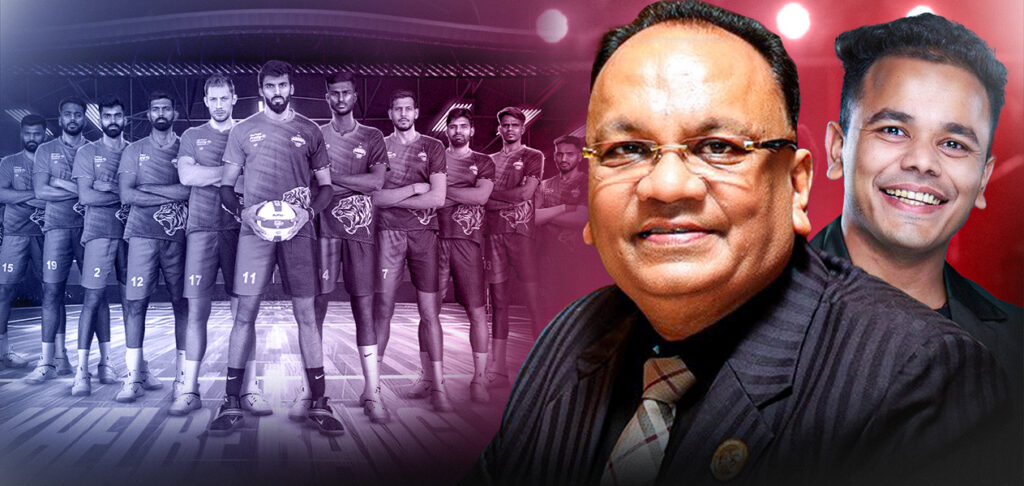


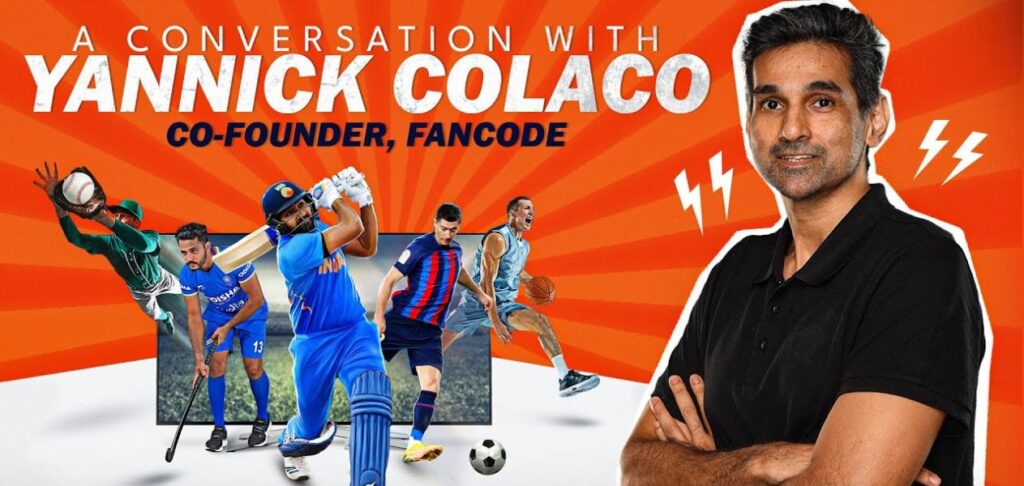
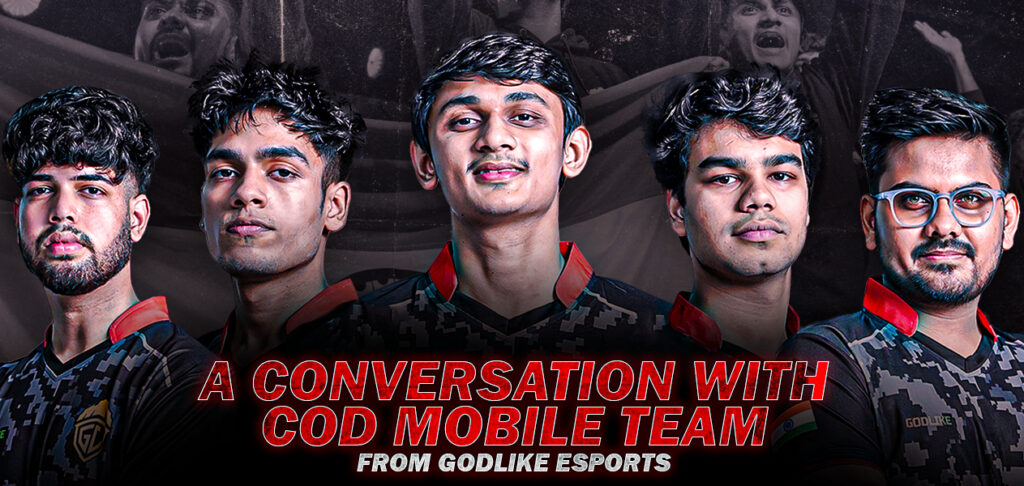

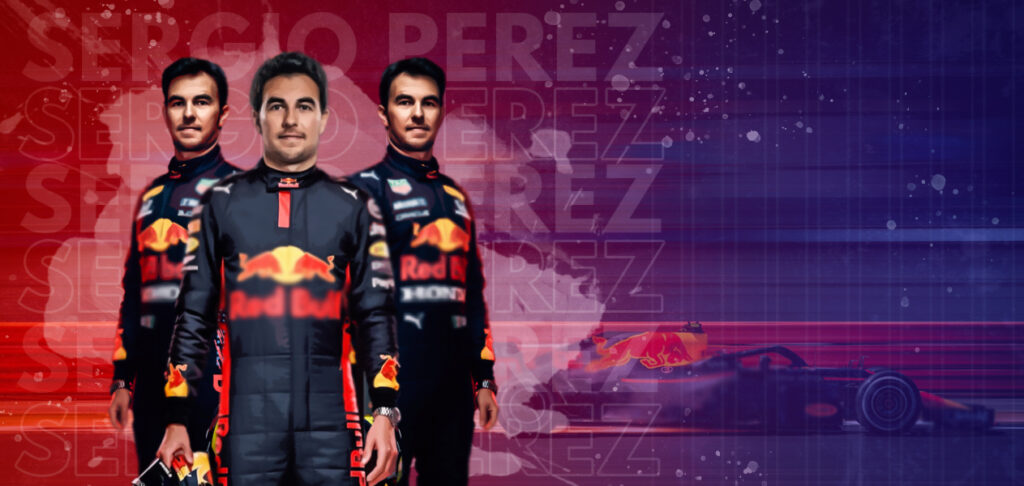

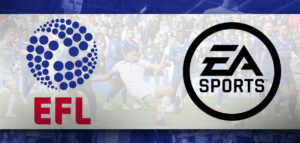
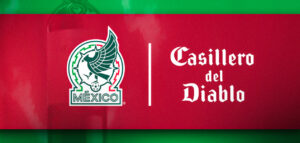


This is a brilliant review. Meticulously covered every detail right from the transfer window to the last game and beyond. Damn well written! Need more sports writers like this!